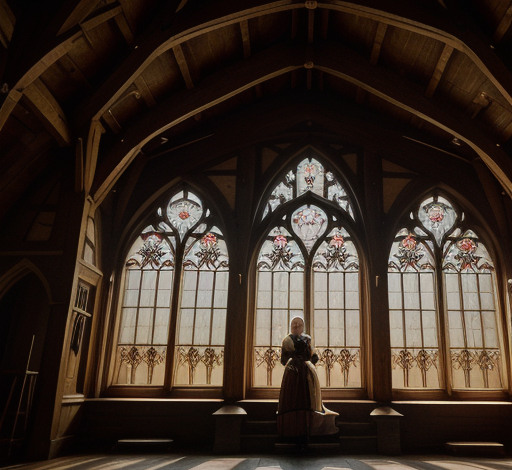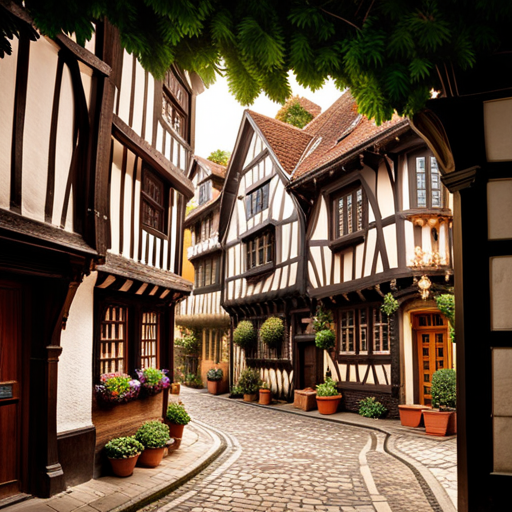
Tudor Architecture in Southampton: A Journey Through Time
Embark on a captivating journey through time as you delve into the rich history of Tudor architecture in Southampton.
Discover the evolution of this iconic architectural style, from grand mansions to charming half-timbered cottages.
Marvel at the intricate details of gables and mullioned windows that define Southampton’s Tudor buildings.
Join us as we explore the legacy of Tudor architecture and the efforts made to preserve and restore these historical gems.
Get ready to be enthralled by the timeless beauty of Southampton’s Tudor architecture.
The Evolution of Tudor Architecture in Southampton
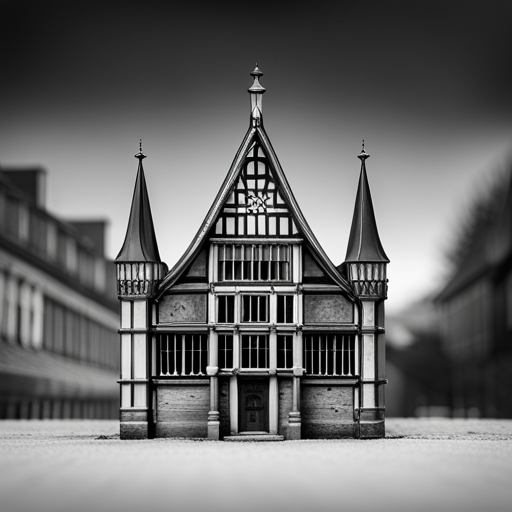
You can see the evolution of Tudor architecture in Southampton through the intricate details of its buildings.
From the early 16th century to the late 17th century, the city witnessed a remarkable transformation in architectural styles.
The earliest examples of Tudor architecture in Southampton can be seen in the timber-framed buildings, characterized by their exposed beams and ornate carvings.
As time went on, the influence of Renaissance architecture became more prominent, resulting in the incorporation of classical elements such as decorative pilasters and pediments.
This fusion of styles is evident in the grand houses and public buildings of the period, showcasing the wealth and status of the city.
The evolution of Tudor architecture in Southampton is a testament to the changing tastes and aspirations of its inhabitants, leaving behind a rich architectural heritage for us to admire and appreciate today.
Iconic Tudor Mansions in Southampton
Visiting these historic mansions will transport you back to the iconic era of the Tudors. Southampton is home to some of the most stunning Tudor mansions in England, each with its own unique charm and architectural style.
One such mansion is Tudor House, a beautiful timber-framed building that has stood the test of time. As you step through its grand entrance, you can’t help but be captivated by the intricate carvings and ornate details that adorn every corner. The Great Hall, with its high ceilings and majestic fireplace, is a sight to behold.
Another must-visit is God’s House Tower, a fortified mansion that once served as a residence for wealthy merchants. From its tower, you can enjoy panoramic views of the city and the bustling docks.
These mansions aren’t just buildings; they’re windows into a bygone era, allowing you to immerse yourself in the rich history and culture of the Tudor period.
Exploring Tudor Half-Timbered Cottages in Southampton
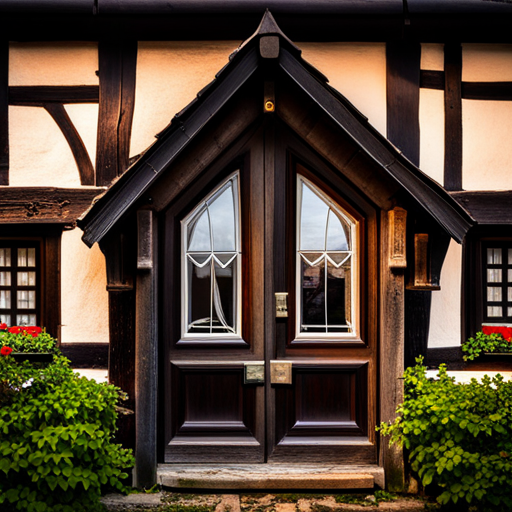
Get ready to be amazed by the charming half-timbered cottages in Southampton, where you can admire the intricate details and unique design of these historic buildings.
Stepping into the world of Tudor architecture, you’ll find yourself transported back in time to a period of rich cultural heritage. The half-timbered cottages in Southampton are a testament to the craftsmanship and creativity of the Tudor era.
As you wander through the narrow streets, you’ll notice the exposed wooden beams that form the signature half-timbered style. Each cottage tells a story, with its uneven floors and crooked walls, a testament to the passage of time.
The use of local materials such as timber and brick adds to the authenticity and charm of these cottages. Don’t forget to marvel at the intricate carvings and decorative motifs that adorn the facades, showcasing the artistic flair of the time.
These cottages aren’t just buildings; they’re living pieces of history, waiting to be explored and cherished.
Southampton’s Tudor Architectural Features: From Gables to Mullioned Windows
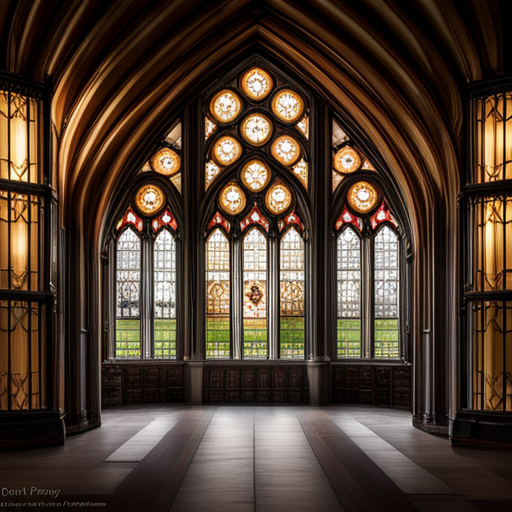
As you stroll through the streets of Southampton, take a moment to appreciate the intricate gables and mullioned windows that adorn the historic half-timbered cottages. These architectural features aren’t merely decorative; they provide valuable insights into the history and craftsmanship of the Tudor era.
The gables, with their steeply pitched roofs and decorative carvings, are a hallmark of Tudor architecture, serving both a practical and aesthetic purpose. They not only protect the building from rain and snow but also add character and charm to the facade.
The mullioned windows, with their delicate wooden frames and small leaded glass panes, are another defining feature of Tudor design. They allow natural light to filter into the interior while showcasing the skill of the craftsmen who meticulously assembled each individual pane.
The Legacy of Tudor Architecture in Southampton: Preservation and Restoration Efforts
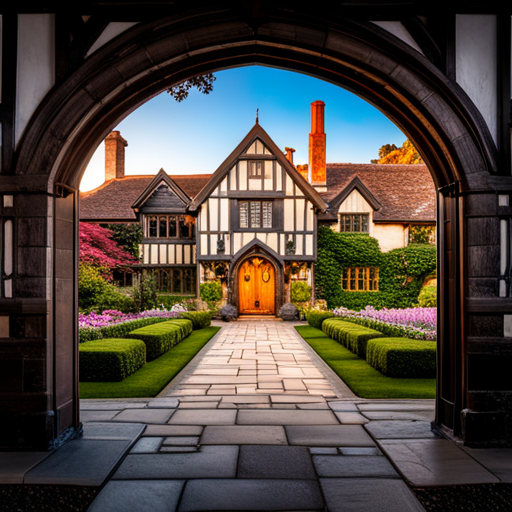
Take a walk around Southampton and you’ll see the preservation and restoration efforts that have kept the legacy of Tudor architecture alive. From the charming timber-framed buildings to the intricate craftsmanship displayed in every detail, the city is a treasure trove of history.
The preservation and restoration efforts in Southampton are a testament to the importance of preserving our architectural heritage. Through careful research and skilled craftsmanship, experts have worked tirelessly to ensure that these historic buildings remain a vibrant part of the city’s landscape. The attention to detail is evident in the careful restoration of original features, such as the ornate stone carvings and the delicate leaded windows. It’s a delicate balance between preserving the past and making these buildings functional for modern use.
Walking through the streets of Southampton, you can’t help but feel a sense of awe and wonder at the beauty and grandeur of these Tudor structures. The preservation and restoration efforts haven’t only kept these buildings standing but have also breathed new life into them, allowing future generations to appreciate and enjoy their architectural splendor.
The legacy of Tudor architecture in Southampton is a testament to the dedication and passion of those who’ve worked tirelessly to preserve this important part of our history.
Conclusion
As you conclude your journey through time in Southampton, you can’t help but marvel at the evolution of Tudor architecture. From the iconic mansions to the quaint half-timbered cottages, the city is a testament to the enduring beauty of this style.
The intricate gables and mullioned windows showcase the attention to detail that defined the era. Thanks to preservation and restoration efforts, the legacy of Tudor architecture remains alive, reminding us of the rich history nestled within Southampton’s walls.


